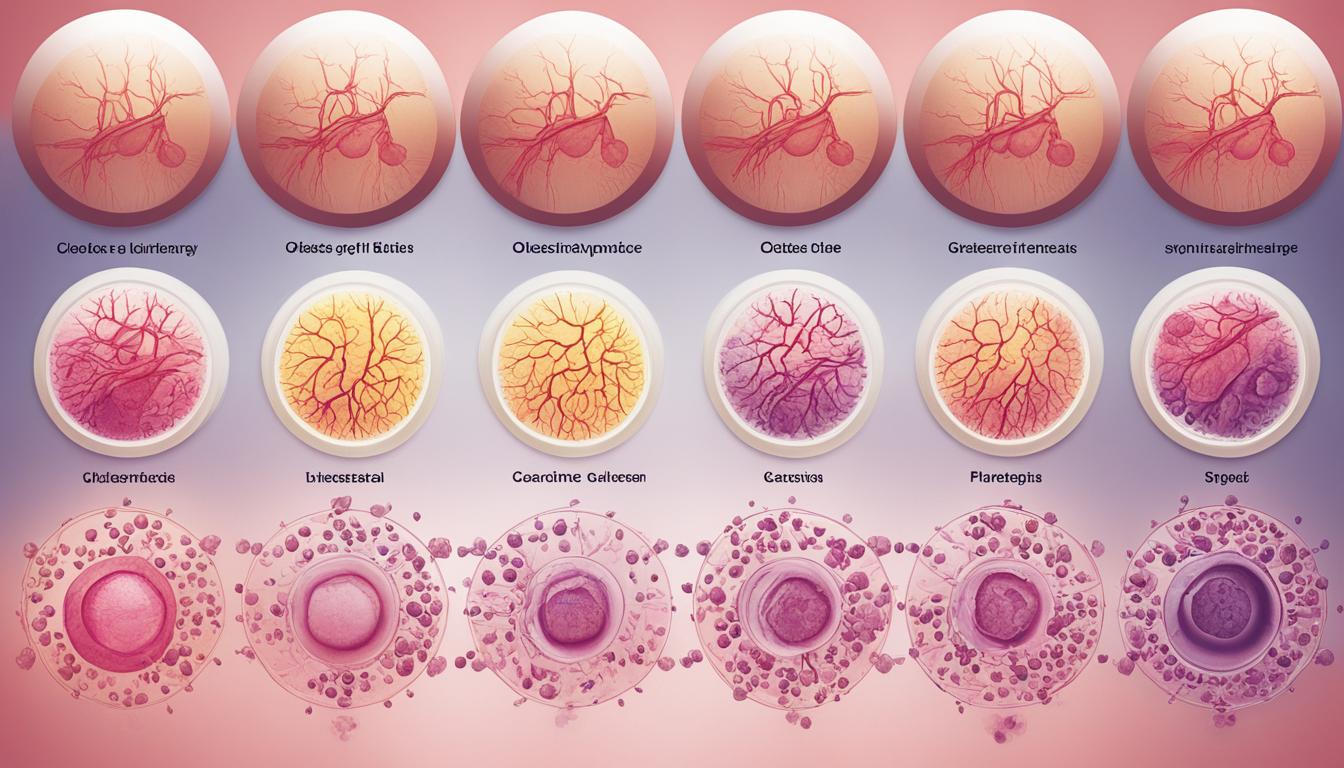Obstetric cholestasis is a liver problem that happens during pregnancy. It makes bile, needed for digesting food, stay inside the liver. This leads to strong itching in the hands and feet. Usually, women feel this itch in the second or third trimester.
It mainly makes the mom-to-be itchy. But it can lead to issues for the baby. Signs include really bad itching, dark pee, weird-colored stools, and skin/eyes/tongue turning yellow.
The issue is often due to changing hormones, mainly more estrogen. Genetic factors also play a big role. If it runs in your family, you had it before, have more than one kid, liver issues, or used in vitro fertilization, your risk goes up.
It might cause the baby to come early or breathe in stool. Long-term, they could face health issues with how they use energy and their heart health.
Doctors diagnose it with blood and pee tests. They check how well the liver is working and bile levels. Treatment targets the itch and avoiding problems. This can mean special medicines, vitamin pills, or changing what you eat.
Scientists are interested in using stem cells to treat this condition. So far, it looks like it could help. But no matter the treatment, finding and handling obstetric cholestasis early is key. This helps keep both the mom and the baby well.
Key Takeaways:
- Obstetric cholestasis is a liver disorder that occurs during pregnancy and causes severe itching in the hands and feet of pregnant women.
- Hormonal changes and genetic factors are the main causes of obstetric cholestasis, with certain risk factors increasing the likelihood of developing the condition.
- Complications of obstetric cholestasis can include a higher risk of premature birth and long-term metabolic and cardiovascular disorders in the baby.
- Diagnosis involves tests to assess liver function and bile levels, and treatment aims to relieve symptoms and prevent complications.
- Stem cell therapy is being explored as a potential treatment option for obstetric cholestasis, showing promising results.
Causes and Risk Factors of Obstetric Cholestasis
Obstetric cholestasis happens during pregnancy and has many causes and risks. One main cause is when the liver can’t get rid of bile properly. This leads to obstetric cholestasis.
Hormones like estrogen change a lot when pregnant, affecting the liver and gallbladder. This can cause obstetric cholestasis. So, women may feel its symptoms during their pregnancy.
Genes also play a part. If someone in your family had obstetric cholestasis, you might get it too. And if you had it before, you’re more likely to have it again when pregnant.
Having more than one child, liver problems, or using IVF can make obstetric cholestasis more likely. The liver struggles with bile when pregnant more than once. And IVF can upset hormone balance, leading to this liver disorder.
It’s important to know why obstetric cholestasis happens. This way, doctors can help pregnant women avoid it or manage it better for the health of both mom and baby.
Complications of Obstetric Cholestasis
Obstetric cholestasis is a condition with complications for both mother and baby. Mothers may have problems absorbing vitamins temporarily. However, the baby faces more severe risks.
For the mother, this condition can affect vitamin absorption briefly. This includes vitamins A, D, E, and K. These issues usually go away after birth and don’t impact the mother’s liver in the long run.
The baby, though, can face serious issues. One is a higher chance of being born too early. Early babies might not fully develop their lungs. This brings a high risk for their health, causing potential complications or even death. It’s vital to know these risks and keep a close eye on the baby’s health while pregnant.
Another risk is meconium aspiration in babies. This happens if the baby breathes in their own stool during birth. It can lead to breathing problems and other issues. Correct care during childbirth is key to lower the risk of this happening.
There’s also some indication that babies could face long-term health problems later on. These issues might include metabolic and cardiovascular disorders. Detecting and managing obstetric cholestasis early is crucial. This helps in decreasing the baby’s potential long-term health threats.
In conclusion, obstetric cholestasis has big effects on both mother and baby. It’s important for healthcare workers to spot and treat this condition. This is critical for the health of both mother and child.
| Complications | Description |
|---|---|
| Premature Birth | Babies born to mothers with obstetric cholestasis have an increased risk of premature birth. |
| Meconium Aspiration | Babies can aspirate meconium, their first stool, during delivery if the mother has obstetric cholestasis, leading to breathing difficulties and complications. |
| Long-term Health Issues | Babies born to mothers with obstetric cholestasis may be at a higher risk of developing metabolic and cardiovascular disorders in adulthood. |
Stem Cell Therapy for Obstetric Cholestasis
Stem cell therapy shows great promise in managing obstetric cholestasis. It uses stem cells to boost liver function and help ease symptoms in pregnant women. These cells can become liver cells, aiding in fixing and regenerating injured liver tissue.
Early research into this therapy is already looking positive. It suggests stem cell therapy might be both safe and effective for tackling obstetric cholestasis. This treatment aims to not only lessen symptoms but also enhance the liver’s function. Yet, more studies are necessary to understand its long-term benefits fully.
Stem cell therapy brings new hope to pregnant women with obstetric cholestasis. It can improve the lives of both the mother and the baby. By focusing on better liver function and easing symptoms, it could be a game-changer. Ongoing research might bring more breakthroughs, confirming stem cell therapy as a valid choice for this condition.

